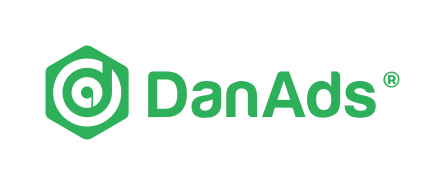It has been a tumultuous year for publishers and brands in the world of digital advertising. Facebook suffered several blowbacks from a much-publicised whistleblower to a sustained global services outage. At the same time, public and regulatory pressure mounted on many of the tracking tools long considered essential to advertising online. In June, Google indicated that they were slowing down their timeline for phasing out support for third-party cookies, but that the cookie’s demise remains inevitable. Trade articles, marketing events and conferences too numerous to count have debated and discussed the cookie-less future all year long.
Four advertising trends in particular have defined 2021 and the evolving needs and concerns of publishers and advertisers alike.
1. First-party data to the fore
2. Brand safety more crucial than ever
3. SMEs can no longer be ignored
4. Innovation in creative formats
Let us explore these trends one-by-one.
Beyond third-party cookies
With the impending obsolescence of the third-party cookie, interest in first-party data has grown significantly. Consumer privacy expectations, GDPR and ePrivacy regulations, and web browsers blocking third-party cookies are all factors driving the shift. At the start of the year, the Forbes Technology Council predicted that “First-Party Data Will Reign Supreme For Marketers In 2021”. Indeed, major digital platforms and publishers invested heavily in their native ad systems this year. TikTok, for instance, launched four new advertising and ecommerce formats in September. Two months later Snapchat followed suit, releasing their ‘Multiple Formats Ad Set’ to advertisers. Building solidly on first-party data, these self-serve ad platforms demonstrate the growing value of in-app and platform-based advertising.
Contextual targeting is another approach finding favour. A great example is The Washington Post, which launched a self-serve ad platform earlier this year, where ads are based entirely on the context of the news piece (rather than user data), and offered on a network of multiple news publishers. A broader range of options for advertisers and marketers shows promise for a more democratised ad market, with some healthy competition for the tech giants Google and Facebook – whose dominance has come under increasing scrutiny this year.
Brand safety
There is no doubt that consumers are more sensitive than ever to brand messaging. The highly-politicised nature of social media, particularly Twitter, has made brands more aware and more cautious about the context in which their adverts appear. Despite that, they’re not necessarily getting any better at preventing brand contamination. One report suggested that two-thirds of the UK’s top 100 advertisers were exposed to potentially unsafe brand environments. A separate study from Reuters reported that 77% of consumers believe that “advertising next to ‘unsavoury or objectionable’ stories can damage their perception of a brand”.
A key concern is therefore the amount of control the publisher has over the adverts that appear on their platform. For advertisers, they need to know which publishers their ads are purchased from. The problem is that the dominant method of digital ad sales, programmatic, makes no such promises. The “black box” of programmatic, while effective at driving down prices, is infamously lacking in transparency on these issues and more. Thus it’s no surprise to see more and more publishers and advertisers turning to brand-safe self-serve environments.
SMEs fuelling ad spend growth
Most of Facebook’s substantial ad revenue ($69.7 billion in 2019) comes from SMEs, rather than large corporate clients. Indeed, the highest-spending 100 brands (out of 8 million advertisers) account for only about 6% of the platform’s ad revenue. For publishers who have long been preoccupied with their larger corporate clients, the SME market is becoming an attractive prospect. Smart publishers are waking up to the potential of serving long-tail advertisers (SMEs) with scalable solutions – as well they should. SME digital advertisers are on the rise. In 2021 social media was the most popular advertising channel for small businesses, and more than a third of SMEs plan to increase their video advertising efforts. Nearly a quarter plan to reduce their investment in print advertising.
Ad format innovation
As consumer media habits evolve, so too must ad formats. As streaming TV continues to demonstrate rapid growth, the opportunity to improve upon classic television ad-break formats emerges. One example: the simple but highly effective pause-screen ad format, popularised by Hulu. While the old school of thought favours aggressive advertising that grabs our attention, sometimes subtlety is the better strategy. In fact, everyday we are served adverts that we likely don’t even recognise as promotional material, and find far less disruptive to our day-to-day activities.
Much like streaming TV, the world of music streaming is quickly adapting with new and less invasive ad formats. Spotify and SoundCloud have both embraced the power of seamless, non-disruptive, integrated advertising. An example: SoundCloud Promote is an advertising platform that the company uses to sell platform-localised promotions to artists. Premium users can promote their tracks to target audiences on the platform so that they appear on the listener’s feed as recommended songs. Why does this work? Because it’s up to the listener to decide if they want to listen to the song or not – and perhaps counterintuitively, this more laissez-faire approach results in much higher engagement rates than traditional interruptive ads. Advertisers and publishers should keep an open mind towards the importance of the user experience when designing or choosing their ad formats.
Last words
Change is the only constant. The digital advertising world continues to evolve at pace.

Luke Insoll
Content Marketing Manager
More articles from the DanAds blog:
AI and the Future of News: Why Publishers Need to Rethink Their Ad Strategy
The rise of AI is transforming more than just how newsrooms operate. It is rewriting the rules of how publishers make money. With AI-powered platforms
Finance Is Becoming Media: Why Self-Serve Advertising Is the Next Strategic Move
The finance sector is entering a new era: one where banking apps, payment platforms, and wealth management tools are evolving into full-fledged media environments.
Responsible AI in Ad Tech: Navigating the Future with Integrity
Artificial Intelligence is here, shaping the way we advertise, create, and connect. In the world of advertising, AI brings incredible opportunities: smarter targeting, streamlined workflows,





